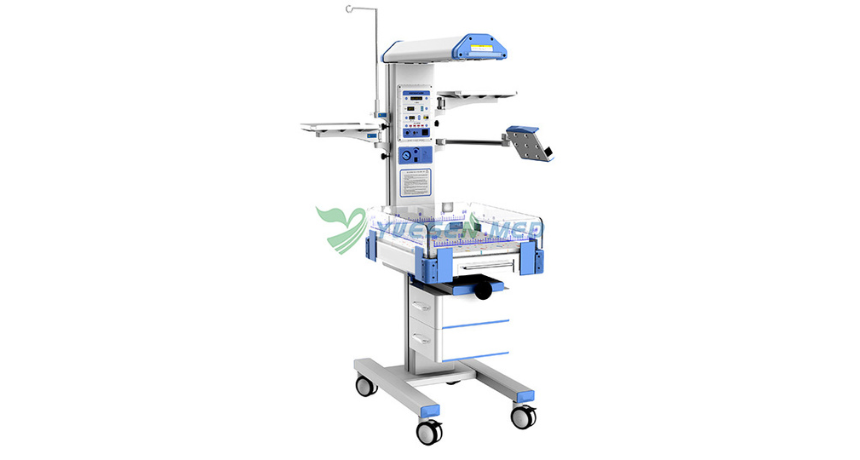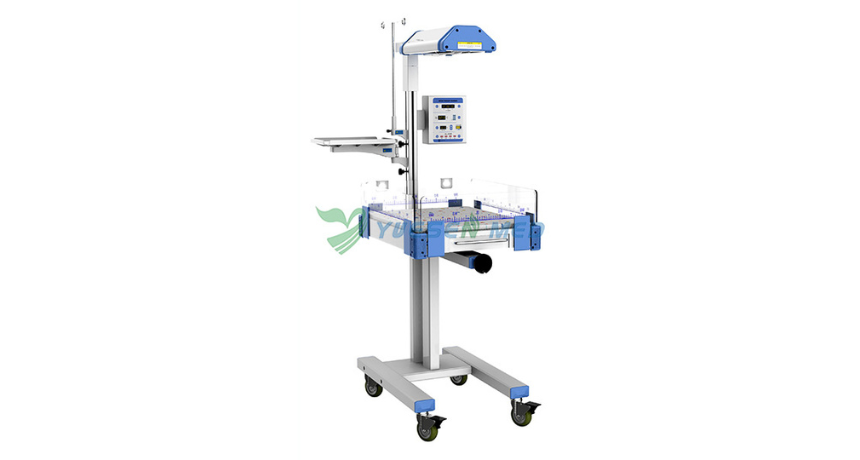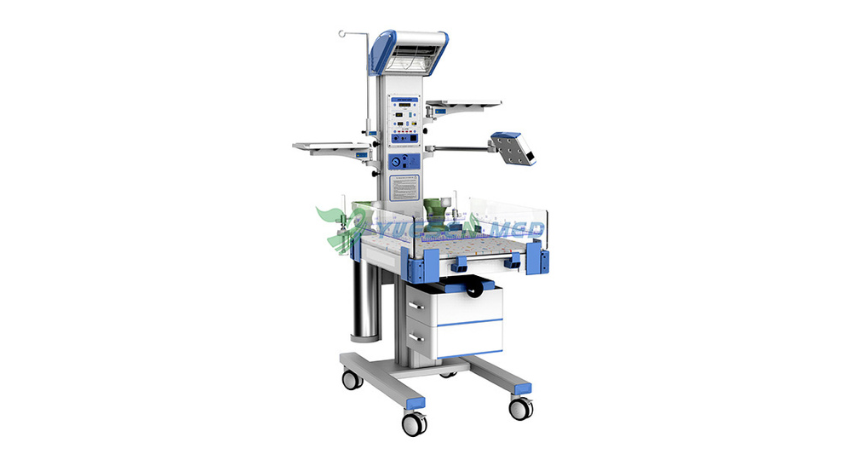Hot Products
YSX500D 50kW DR system set up and put into service in Cambodia.
YSENMED YSX500D 50kW digital x-ray system has been successfully set up and put into service in a hospital in Cambodia.
YSX056-PE serving as a vehicle-mounted x-ray in the Philippines
YSX056-PE 5.6kW portable x-ray unit has been adapted to fit on a truck, to provide mobile x-ray examination service for remote communities in the Philippines.
X Ray Machine To Zimbabwe
x ray machine, 50KW x ray machine
Microscope To Malawi
Achromatic objectives: 4X、10X、40X(S), 100X(S、Oil) Wide field eyepiece: WF10X(WF16X for option) Eyepiece head: Sliding binocular head inclined at 45° Stage: Double layer mechanical stage size 140X140mm, moving range 75X45mm Focusing: Coaxial coarse and
From Culture to Research: Why Water-Jacket Incubators Are a Lab Essential
Views : 1039
Update time : 2024-10-25 11:28:00
When it comes to laboratory equipment, few items are as crucial as incubators. Among these, water-jacket incubators stand out as essential tools for various applications, from microbiology to tissue culture. But why are they so important? Let's dive into the world of water-jacket incubators, exploring their features, benefits, and why they should be on every lab's must-have list.

What Is a Water-Jacket Incubator?
A water-jacket incubator is a specialized piece of lab equipment designed to maintain a consistent temperature for biological samples. Unlike conventional incubators that rely on air circulation, water-jacket models use a water bath surrounding the chamber to provide even heat distribution. This design minimizes temperature fluctuations and ensures a stable environment for cultures.
The Anatomy of a Water-Jacket Incubator
Water Jacket
The most distinctive feature is the water jacket itself. This layer of water acts as a thermal buffer, absorbing heat and releasing it evenly throughout the chamber. It's like having a cozy blanket around your samples, keeping them warm and snug.
Temperature Control System
Modern water-jacket incubators come equipped with advanced temperature control systems. These systems often include digital displays and programmable settings, allowing researchers to set precise temperatures for different experiments. Think of it as having a smart thermostat for your lab.
Air Circulation
While the water jacket provides stability, many models also incorporate gentle air circulation. This feature helps distribute heat evenly, preventing hot or cold spots that could jeopardize your research.
Humidity Control
Some water-jacket incubators offer humidity control, which is vital for certain cultures. Maintaining the right humidity levels can make the difference between a successful experiment and a failed one. It's like ensuring your plants get the right amount of water—too little or too much can cause problems.
Why Are Water-Jacket Incubators Essential?
Consistency is Key
In research, consistency is everything. Water-jacket incubators provide a stable environment that reduces the risk of temperature fluctuations. This reliability is crucial for experiments that require precise conditions, such as cell culture or microbial growth.
Versatility Across Applications
From microbiology to molecular biology, water-jacket incubators can accommodate various applications. Whether you're growing bacteria, yeast, or mammalian cells, these incubators can handle it all. They're like the Swiss Army knife of laboratory equipment!
Enhanced Growth Rates
Studies have shown that maintaining optimal temperatures and conditions can significantly enhance growth rates in cultures. With a water-jacket incubator, researchers can achieve faster results, making it an invaluable asset in time-sensitive projects.
Reduced Risk of Contamination
Water-jacket incubators often feature sealed chambers, which help minimize the risk of contamination. This is particularly important in sensitive experiments where even the slightest contamination can skew results. It's like having a fortress protecting your precious samples!
Key Features to Look For
Temperature Range
When selecting a water-jacket incubator, consider the temperature range it offers. Different experiments require different temperatures, so having a versatile range is essential. Look for models that can accommodate a wide range of temperatures, typically from 4°C to 60°C.
Capacity
The capacity of the incubator is another crucial factor. Depending on your lab's needs, you might require a larger unit to accommodate multiple samples or a smaller one for specific experiments. Think about your workflow and choose accordingly.
User-Friendly Controls
Digital interfaces with intuitive controls make operating the incubator a breeze. Look for models that offer easy programming and clear displays, allowing you to focus on your research rather than fiddling with settings.
Safety Features
Safety should never be overlooked. Ensure the incubator has features like over-temperature protection and alarms to alert you of any issues. It's like having a safety net while you conduct your experiments.
Maintenance Tips for Longevity
Regular Calibration
To ensure accuracy, regular calibration of temperature settings is essential. This process helps maintain the reliability of your incubator, ensuring your experiments yield consistent results.
Cleaning and Sanitization
Keeping your incubator clean is vital for preventing contamination. Regularly sanitize the interior and exterior surfaces, and make sure the water jacket is filled with distilled water to prevent mineral buildup.
Monitor Performance
Keep an eye on the performance of your incubator. Regularly check the temperature and humidity levels to ensure they remain within the desired range. This proactive approach can save you from potential issues down the line.
Conclusion
In the world of laboratory research, water-jacket incubators are indispensable tools that provide stability, versatility, and reliability. Their unique design and features make them ideal for a wide range of applications, from microbiology to tissue culture. By investing in a quality water-jacket incubator, researchers can ensure their experiments are conducted under optimal conditions, leading to more reliable results and faster growth rates.
So, whether you're a seasoned researcher or just starting your journey in the lab, consider adding a water-jacket incubator to your toolkit. It's not just an investment in equipment; it's an investment in the success of your research endeavors. After all, in the realm of science, every degree matters!
FAQ
What is the primary function of a water-jacket incubator?
The primary function of a water-jacket incubator is to maintain a stable and consistent temperature for biological samples. The water jacket surrounding the chamber acts as a thermal buffer, ensuring even heat distribution and minimizing temperature fluctuations, which is crucial for experiments like cell culture and microbial growth.
How does a water-jacket incubator differ from a traditional incubator?
A water-jacket incubator differs from a traditional incubator primarily in its heating mechanism. While traditional incubators often rely on air circulation for temperature control, water-jacket models use a layer of water to provide more uniform heating. This design helps maintain consistent temperatures and reduces the risk of hot or cold spots within the chamber.
What types of applications benefit from using a water-jacket incubator?
Water-jacket incubators are versatile and can be used in various applications, including microbiology, molecular biology, and tissue culture. They are particularly beneficial for growing bacteria, yeast, and mammalian cells, as they provide the stable conditions necessary for optimal growth and development.
How can I ensure my water-jacket incubator is functioning properly?
To ensure your water-jacket incubator is functioning properly, regularly calibrate the temperature settings, monitor temperature and humidity levels, and keep the unit clean. It's also essential to check the water level in the jacket and sanitize the interior to prevent contamination. Regular maintenance helps extend the life of the incubator and ensures reliable performance.
Are there specific safety features to look for in a water-jacket incubator?
Yes, when selecting a water-jacket incubator, look for safety features such as over-temperature protection, alarms for temperature deviations, and secure seals to minimize contamination risks. These features help protect your samples and ensure a safe working environment in the lab.

What Is a Water-Jacket Incubator?
A water-jacket incubator is a specialized piece of lab equipment designed to maintain a consistent temperature for biological samples. Unlike conventional incubators that rely on air circulation, water-jacket models use a water bath surrounding the chamber to provide even heat distribution. This design minimizes temperature fluctuations and ensures a stable environment for cultures.
The Anatomy of a Water-Jacket Incubator
Water Jacket
The most distinctive feature is the water jacket itself. This layer of water acts as a thermal buffer, absorbing heat and releasing it evenly throughout the chamber. It's like having a cozy blanket around your samples, keeping them warm and snug.
Temperature Control System
Modern water-jacket incubators come equipped with advanced temperature control systems. These systems often include digital displays and programmable settings, allowing researchers to set precise temperatures for different experiments. Think of it as having a smart thermostat for your lab.
Air Circulation
While the water jacket provides stability, many models also incorporate gentle air circulation. This feature helps distribute heat evenly, preventing hot or cold spots that could jeopardize your research.
Humidity Control
Some water-jacket incubators offer humidity control, which is vital for certain cultures. Maintaining the right humidity levels can make the difference between a successful experiment and a failed one. It's like ensuring your plants get the right amount of water—too little or too much can cause problems.
Why Are Water-Jacket Incubators Essential?
Consistency is Key
In research, consistency is everything. Water-jacket incubators provide a stable environment that reduces the risk of temperature fluctuations. This reliability is crucial for experiments that require precise conditions, such as cell culture or microbial growth.
Versatility Across Applications
From microbiology to molecular biology, water-jacket incubators can accommodate various applications. Whether you're growing bacteria, yeast, or mammalian cells, these incubators can handle it all. They're like the Swiss Army knife of laboratory equipment!
Enhanced Growth Rates
Studies have shown that maintaining optimal temperatures and conditions can significantly enhance growth rates in cultures. With a water-jacket incubator, researchers can achieve faster results, making it an invaluable asset in time-sensitive projects.
Reduced Risk of Contamination
Water-jacket incubators often feature sealed chambers, which help minimize the risk of contamination. This is particularly important in sensitive experiments where even the slightest contamination can skew results. It's like having a fortress protecting your precious samples!
Key Features to Look For
Temperature Range
When selecting a water-jacket incubator, consider the temperature range it offers. Different experiments require different temperatures, so having a versatile range is essential. Look for models that can accommodate a wide range of temperatures, typically from 4°C to 60°C.
Capacity
The capacity of the incubator is another crucial factor. Depending on your lab's needs, you might require a larger unit to accommodate multiple samples or a smaller one for specific experiments. Think about your workflow and choose accordingly.
User-Friendly Controls
Digital interfaces with intuitive controls make operating the incubator a breeze. Look for models that offer easy programming and clear displays, allowing you to focus on your research rather than fiddling with settings.
Safety Features
Safety should never be overlooked. Ensure the incubator has features like over-temperature protection and alarms to alert you of any issues. It's like having a safety net while you conduct your experiments.
Maintenance Tips for Longevity
Regular Calibration
To ensure accuracy, regular calibration of temperature settings is essential. This process helps maintain the reliability of your incubator, ensuring your experiments yield consistent results.
Cleaning and Sanitization
Keeping your incubator clean is vital for preventing contamination. Regularly sanitize the interior and exterior surfaces, and make sure the water jacket is filled with distilled water to prevent mineral buildup.
Monitor Performance
Keep an eye on the performance of your incubator. Regularly check the temperature and humidity levels to ensure they remain within the desired range. This proactive approach can save you from potential issues down the line.
Conclusion
In the world of laboratory research, water-jacket incubators are indispensable tools that provide stability, versatility, and reliability. Their unique design and features make them ideal for a wide range of applications, from microbiology to tissue culture. By investing in a quality water-jacket incubator, researchers can ensure their experiments are conducted under optimal conditions, leading to more reliable results and faster growth rates.
So, whether you're a seasoned researcher or just starting your journey in the lab, consider adding a water-jacket incubator to your toolkit. It's not just an investment in equipment; it's an investment in the success of your research endeavors. After all, in the realm of science, every degree matters!
FAQ
What is the primary function of a water-jacket incubator?
The primary function of a water-jacket incubator is to maintain a stable and consistent temperature for biological samples. The water jacket surrounding the chamber acts as a thermal buffer, ensuring even heat distribution and minimizing temperature fluctuations, which is crucial for experiments like cell culture and microbial growth.
How does a water-jacket incubator differ from a traditional incubator?
A water-jacket incubator differs from a traditional incubator primarily in its heating mechanism. While traditional incubators often rely on air circulation for temperature control, water-jacket models use a layer of water to provide more uniform heating. This design helps maintain consistent temperatures and reduces the risk of hot or cold spots within the chamber.
What types of applications benefit from using a water-jacket incubator?
Water-jacket incubators are versatile and can be used in various applications, including microbiology, molecular biology, and tissue culture. They are particularly beneficial for growing bacteria, yeast, and mammalian cells, as they provide the stable conditions necessary for optimal growth and development.
How can I ensure my water-jacket incubator is functioning properly?
To ensure your water-jacket incubator is functioning properly, regularly calibrate the temperature settings, monitor temperature and humidity levels, and keep the unit clean. It's also essential to check the water level in the jacket and sanitize the interior to prevent contamination. Regular maintenance helps extend the life of the incubator and ensures reliable performance.
Are there specific safety features to look for in a water-jacket incubator?
Yes, when selecting a water-jacket incubator, look for safety features such as over-temperature protection, alarms for temperature deviations, and secure seals to minimize contamination risks. These features help protect your samples and ensure a safe working environment in the lab.
Related News
Read More >>
 What is the Difference Between Radiant Warmer and Phototherapy?
What is the Difference Between Radiant Warmer and Phototherapy?
Apr .19.2025
Radiant warmers and phototherapy are crucial in neonatal care, but they serve different purposes. Let's dive into the nitty-gritty of these two techniques and explore how they differ, and when each is appropriate.
 YSX056-PE portable digital x-ray unit set up in the Philippines
YSX056-PE portable digital x-ray unit set up in the Philippines
Apr .19.2025
YSX056-PE portable digital x-ray unit has been set up in a hospital in the Philippines and the good quality images please the doctors.
 Is an Infant Radiant Warmer Good for Babies' Health?
Is an Infant Radiant Warmer Good for Babies' Health?
Apr .13.2025
What exactly is the infant radiant warmer, and how does it contribute to a baby's health? Let's dive into this topic and explore the ins and outs of infant radiant warmers.
 What is an Infant Radiant Warmer?
What is an Infant Radiant Warmer?
Apr .12.2025
One of the unsung heroes in neonatal care is the infant radiant warmer. But what exactly is it? Let's dive into the world of infant care and explore the ins and outs of this vital device.



